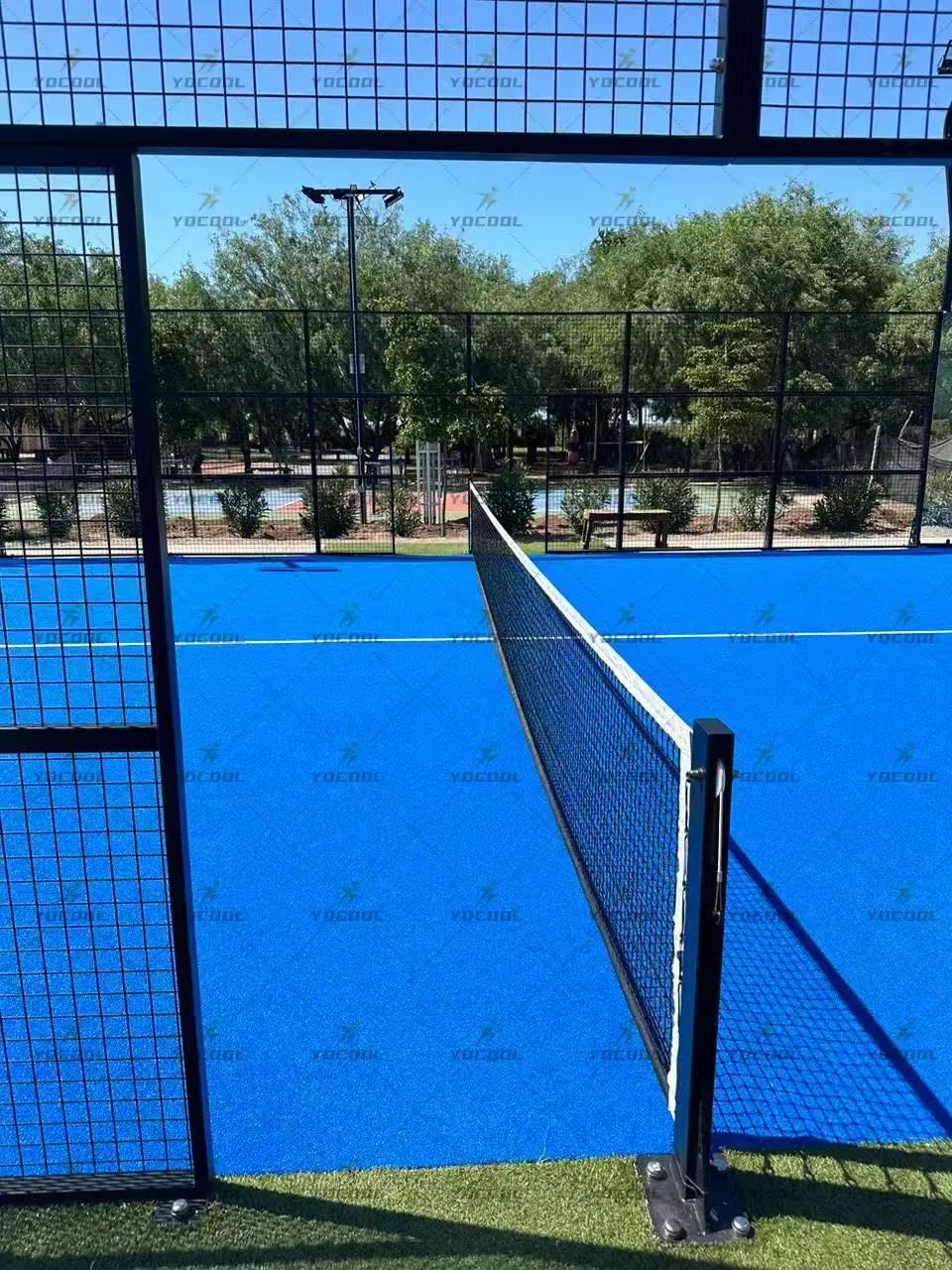

In recent years, Padel Tennis Ppickleball, as an emerging ball sport, has rapidly gained popularity worldwide. Both of these sports have attracted a large number of participants due to their ease of learning, socialization, and moderate intensity of exercise. Although they both belong to racket sports and share similarities in some aspects, they also have significant differences in rules, venues, equipment, and development prospects.

Padel Tennis Ppickleball is played in a closed field with glass walls surrounding it, allowing the ball to bounce back on the walls. Its rules draw inspiration from tennis and squash, emphasizing strategic and multi turn confrontation. Pickball, on the other hand, is played on a smaller court, similar to a tennis court but with a smaller area and lower net. The rules of Pickball are relatively simple, including serving rules, non touchable areas, etc., and place more emphasis on the convenience of entry. The difference in court size and rules directly affects the rhythm and strategy of the two sports. Plate tennis emphasizes tactics and control, while pickleball focuses more on quick reactions and close net confrontation.
Paddle tennis and pickleball usually use smaller rackets with holes on the racket surface, which can generate more spin when hitting the ball. The racket used for Pickball is relatively larger and made of a variety of materials, ranging from wood to composite materials. In addition, the balls used in the two sports are also different. Plate tennis uses balls similar to tennis, but with lower air pressure and weaker rebound force. Pick ball uses a plastic ball with holes, which has a slower flight speed and is easier to control. The differences in equipment result in differences in the way the two sports hit the ball and the use of force.
Paddle tennis and pickleball have become very popular in Europe and Latin America, and are gradually being promoted globally. Its enclosed site design makes it easier to promote in urban environments and more suitable for areas with harsh climate conditions. Pickball has become a popular sport in the United States, with its simple rules and low entry cost making it easier to attract public participation. With the improvement of infrastructure and increased promotion efforts, these two sports are expected to achieve greater development on a global scale.
In summary, although paddle tennis and pickleball are both emerging ball sports, they have significant differences in rules, venues, equipment, and development prospects. Plate tennis emphasizes more on strategy and control, while pickleball focuses more on quick reflexes and close net confrontation. Both sports have their unique charm and advantages, and are expected to continue to grow and develop in the future, bringing people more sports fun and social experiences.
Padel: 20m x 10m (doubles), surrounded by a 34 meter high glass/metal fence.
Pickleball: 13.4m x 6.1m (doubles, close to badminton court), no walls, hard ground (acrylic or cement).
Tennis: 23.77m x 8.23m (singles), noticeably larger.
Padel: Solid carbon fiber racket without strings (with holes), with a low-pressure tennis ball (diameter 6.35cm).
Pickleball: a hard composite racket (similar to an enlarged version of a table tennis racket), with a plastic perforated ball (diameter 7.4cm, lightweight).
Tennis: Equipped with a string racket, the ball is a high-pressure felt ball (with the strongest elasticity).
Padel: Similar to tennis (15/30/40 points), players need to serve before attacking, and can use the fence to bounce back.
Pickleball: Only the serving team scores, with 11 points per game (2 wins), and there is a "non interception zone" (kitchen zone) that restricts net ahead kills.
Tennis: Traditional 15/30/40 scoring, no court restrictions.
Small field, slow ball speed (light plastic ball), low running demand;
The rules are simple (such as serving must be initiated, and it is prohibited to volley the ball in the "smash zone");
The equipment is lightweight, easy to use, and has strong social attributes.
Padel: Originating in Mexico/Spain, it has experienced explosive growth in Europe and Latin America (with over 25 million players worldwide).
Pickleball: The fastest growing game in the United States (with over 36 million players by 2023), popular in communities and schools due to its low cost and low entry barriers.
Common point: Both are regarded as "simplified versions of tennis", emphasizing doubles and fun, suitable for all ages.
The Rising Padel Tennis Pickleball: A New Social Sports Venue
The Exercise Benefits of Padel Glass for Endurance and Coordination
Padel Tennis Ppickleball: Differences and Development Prospects of Emerging Ball Sports
Padel Court in its infancy: a new type of sports and social space
Padel Court Glass: Technology, Performance, and Impact
Paddle Tennis and Pickleball: a thriving sport